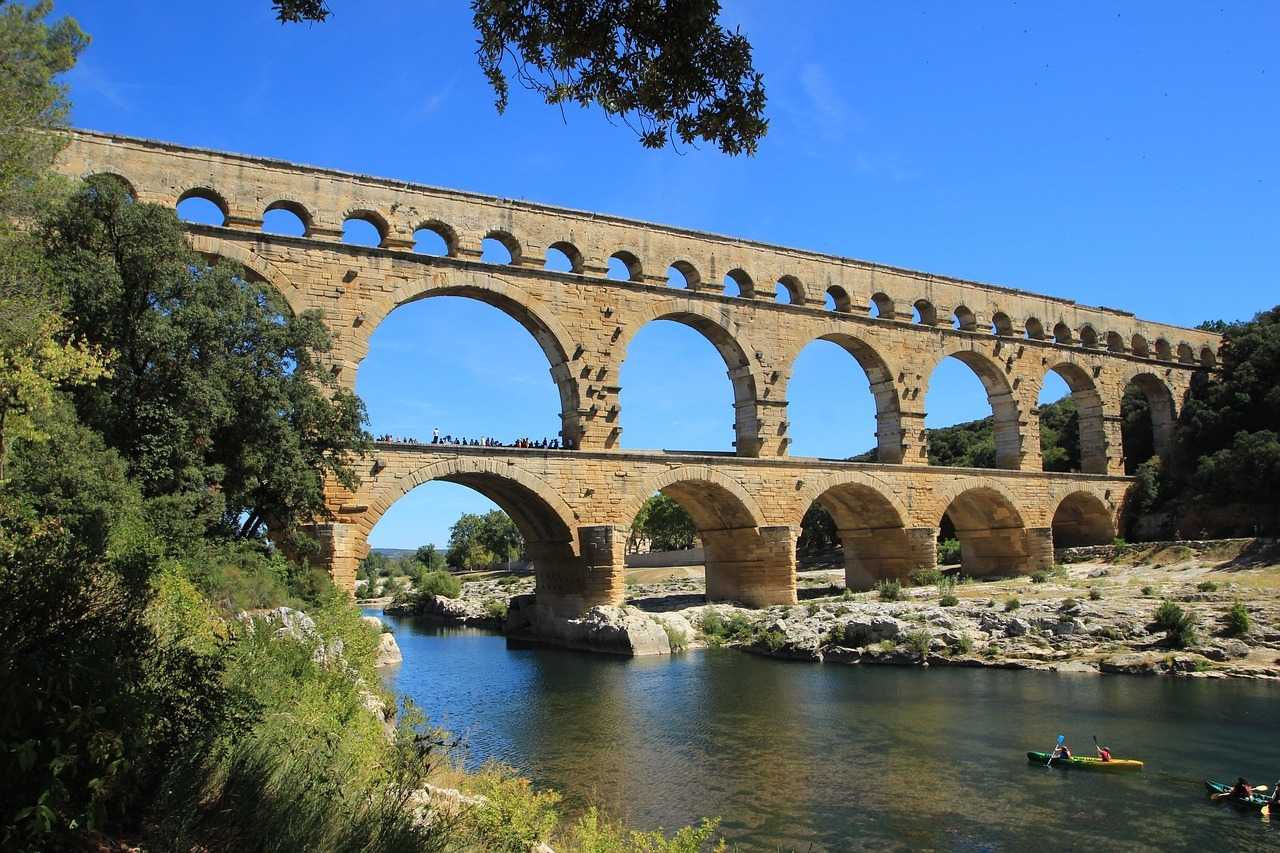The Pont du Gard is one of the most visited historical sites in all of Europe, attracting an estimated 1.5 million people per year in France. The Roman structure, a relic of the aqueduct that originally brought water from Uzès to Nîmes over 50 kilometers away, has received a great deal of praise for its excellent preservation. The Pont du Gard, with its three-story arcades, is an instantly recognizable landmark in the Nîmes area. In 2021, the ancient monument was one of the most visited in France, with an estimated 1.5 million people having braved the stone behemoth.
While nearly two thousand years old, the structure has been remarkably well kept. It is between Uzès and Remoulins, France, and is 50 meters tall, giving it a commanding view of the placid Gardon River below. Pont du Gard is proof of the Romans’ extraordinary level of expertise.
Why did the Romans build the Pont du Gard?

The Pont du Gard was constructed as part of an ancient Roman aqueduct that was originally constructed between the years 40 and 60 AD. Water was transported over its more than 50 km length to the city of Nîmes, historically known as Nemausus. The water came from a group of twelve springs at the base of Uzès; they are collectively known as the Fontaine d’Eure.
The valuable water was then delivered to the Roman metropolis using gravity and the aqueduct’s 25-centimeter-per-kilometer grade. It is estimated that 30,000 to 40,000 cubic meters of potable water might be carried daily using this method.
How was the Pont du Gard built?
It doesn’t take much exploration to realize that the Pont du Gard is an enormous feat of engineering. It stands around 49 meters tall, has a capacity of 30,000 cubic meters, and weighs perhaps over 50,000 tons. It has three tiers, each made up of rows of arches: 6 on the first level, 11 on the second, and 35 on the top (the floor originally had 47 arches but lost 12 over time). The length of the third level, the longest, is thus no less than 275 meters.
The central arch, at 24.50 meters in length, is also the longest ever built during the Roman era. Historians estimate that in under five years, approximately a thousand men worked to build the limestone structure. It took 15 years to complete the Pont du Gard aqueduct in its entirety. Thus, it would have served the people of Nemausus for at least 500 years.
The Pont du Gard after the Romans
Limestone deposits would have clogged the Pont du Gard and reduced water flow if it hadn’t been properly maintained. At the start of the 6th century, the aqueduct would have stopped being used. However, it is not the end of its narrative. Over the next several centuries, the structure suffered several deteriorations.

12 third-floor arches were demolished in the 12th century to supply building materials for nearby churches. A second-floor tunnel was constructed for cart traffic in the 14th century. It turned out that this plan had the unintended consequence of severely weakening the structure and triggering a chain reaction of disastrous events. But it wasn’t until the 16th century that repair efforts were started.
The building’s condition worsened towards the middle of the 18th century, when a road bridge was constructed to reach the facade at that level. The poor condition of the Pont du Gard wasn’t a cause for alarm until the 19th century. Two repair initiatives were launched after the building was designated a historical landmark, preventing its destruction.
New degradations were caused by tourism beginning in the 1930s and continuing until a development project was established to regulate the number of tourists and monitor their activities. The Pont du Gard has been recognized as a World Heritage Site by UNESCO since 1985.
How do you visit the Pont du Gard?

The Pont du Gard facility is open every day of the year, however, its hours of operation change with the seasons. There is no admission price to see the structure, however, there is a charge for the guided tours (15 euros for adults). Right bank and left bank parking lots allow visitors to the site who are driving or using a bus to park their vehicles for a fee (9 euros per vehicle for the day).
However, there are hiking and biking pathways that will get you there. Greenway construction between Beaucaire and the Pont du Gard site has not yet been fully finished. The property also has pay-to-enter exploration zones, such as a theater and a museum with rotating exhibits. There is also a restaurant and a shop at the location.
One summer activity is swimming at the Pont du Gard
The Pont du Gard is more than just a historical landmark in the summertime. The area can also be used for lounging and taking a dip. Gardon River’s beaches are a great place to relax and take in the area’s stunning scenery with a group of friends or loved ones. It’s OK to go for a swim, but don’t jump from the bridge or the rocks. The facility also has a unique schedule of tours, exhibits, and music and light events each day and night from July through September.



